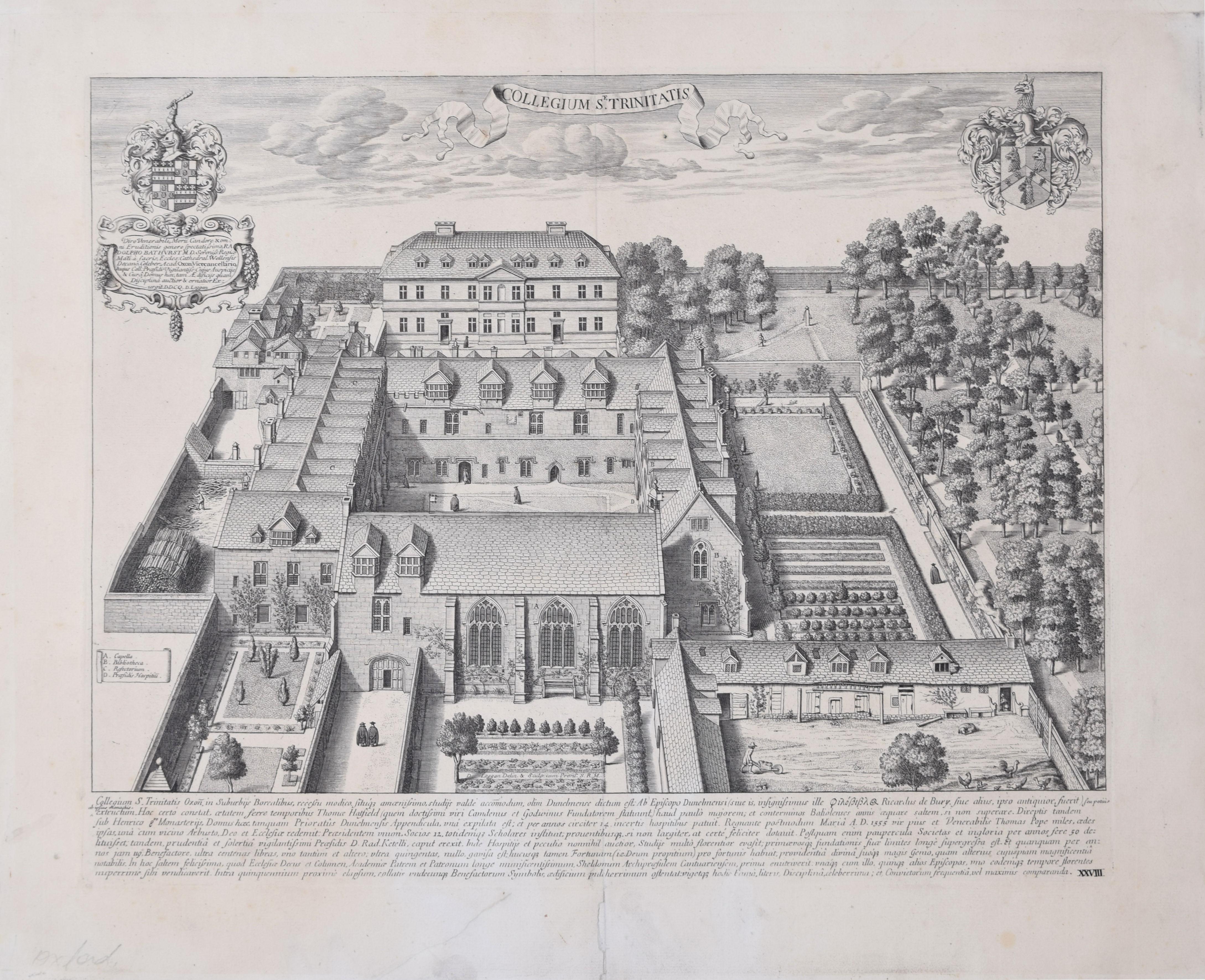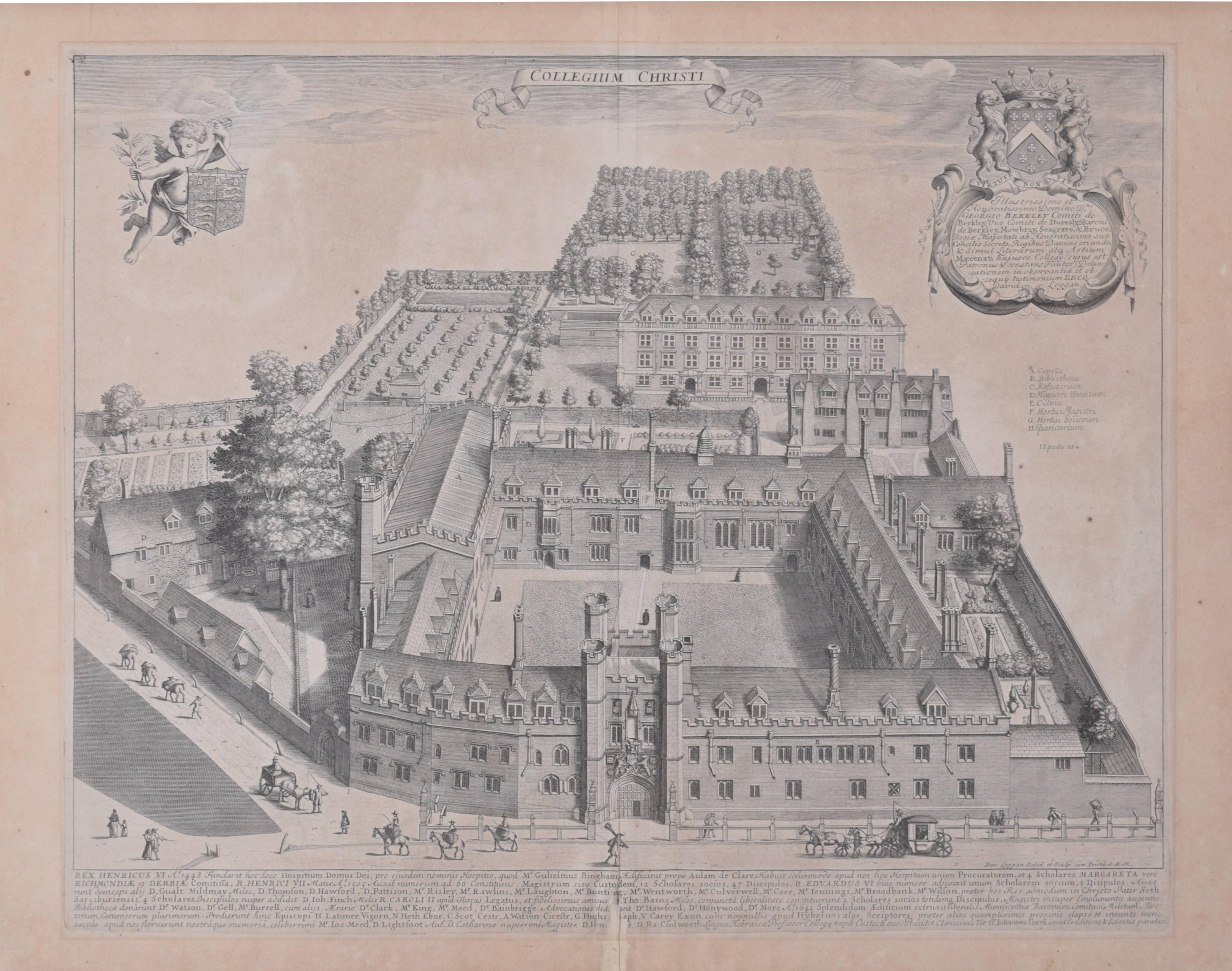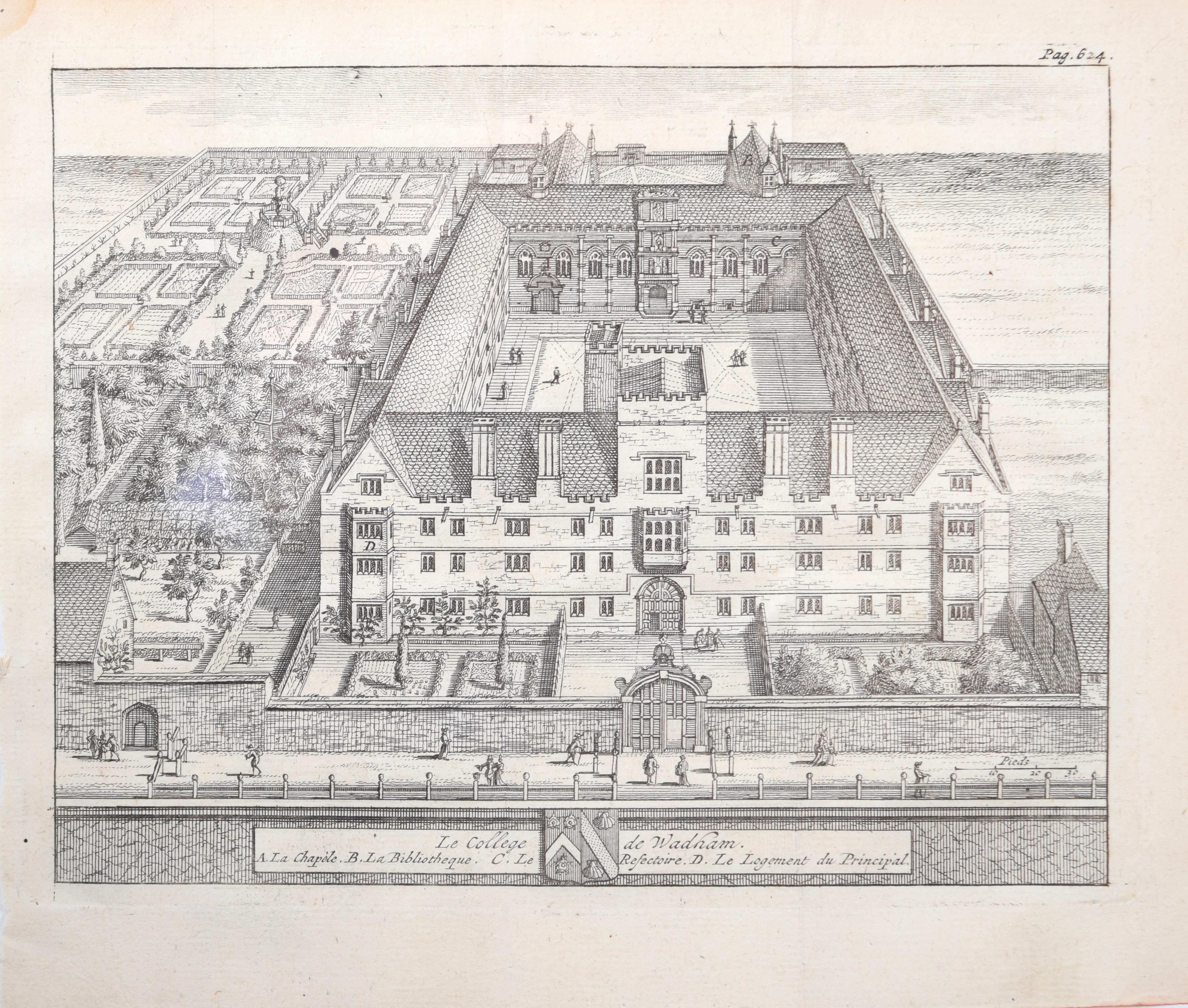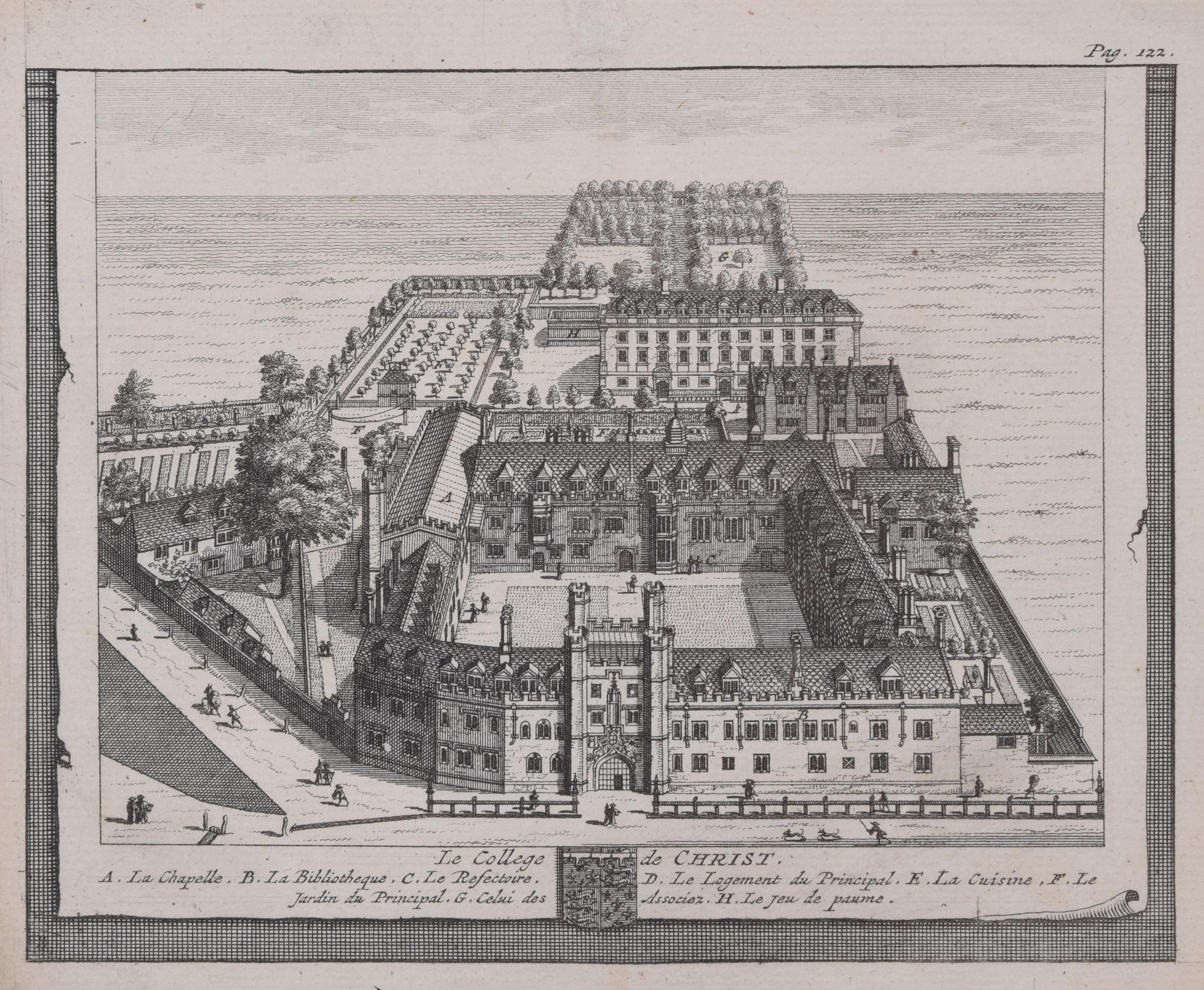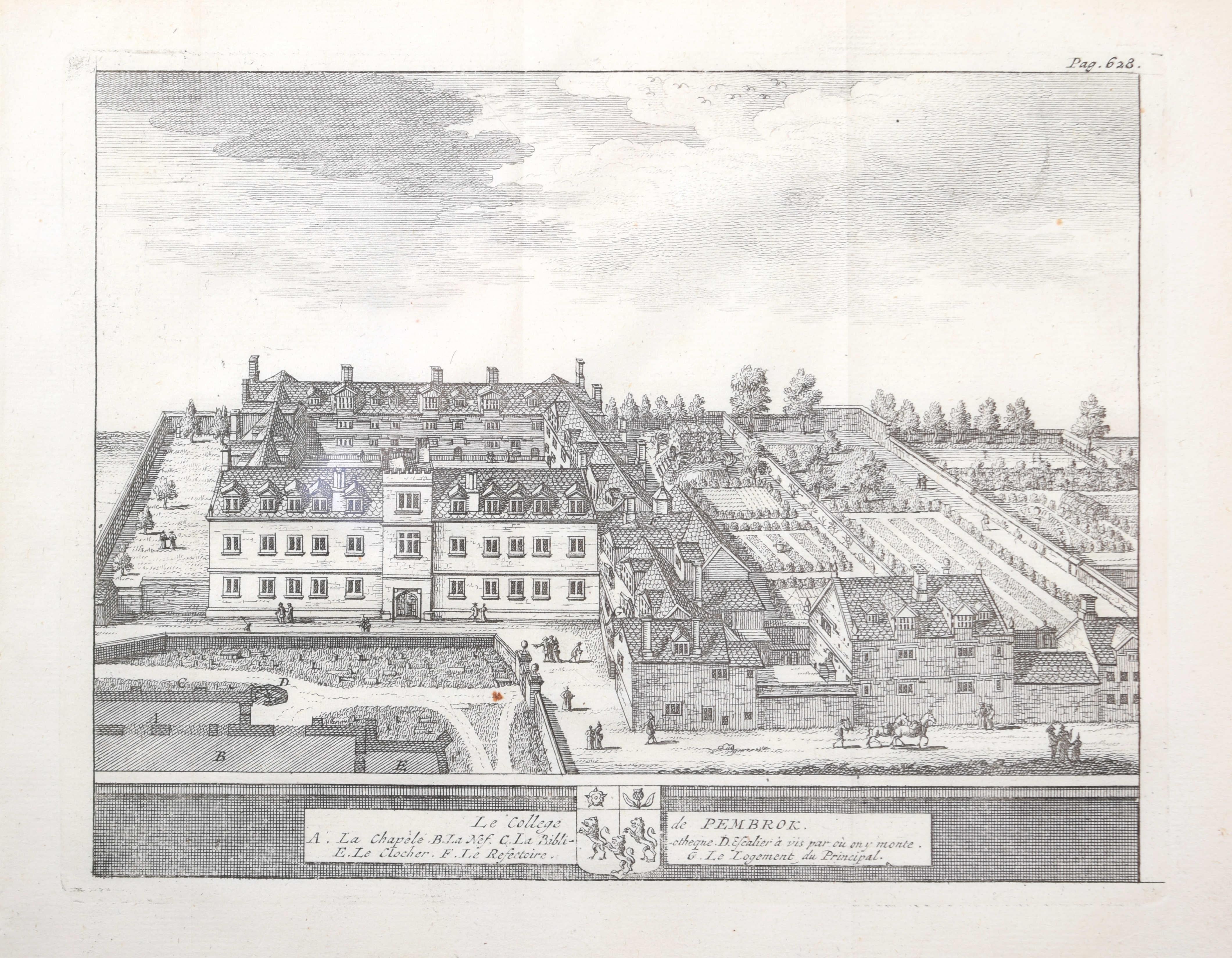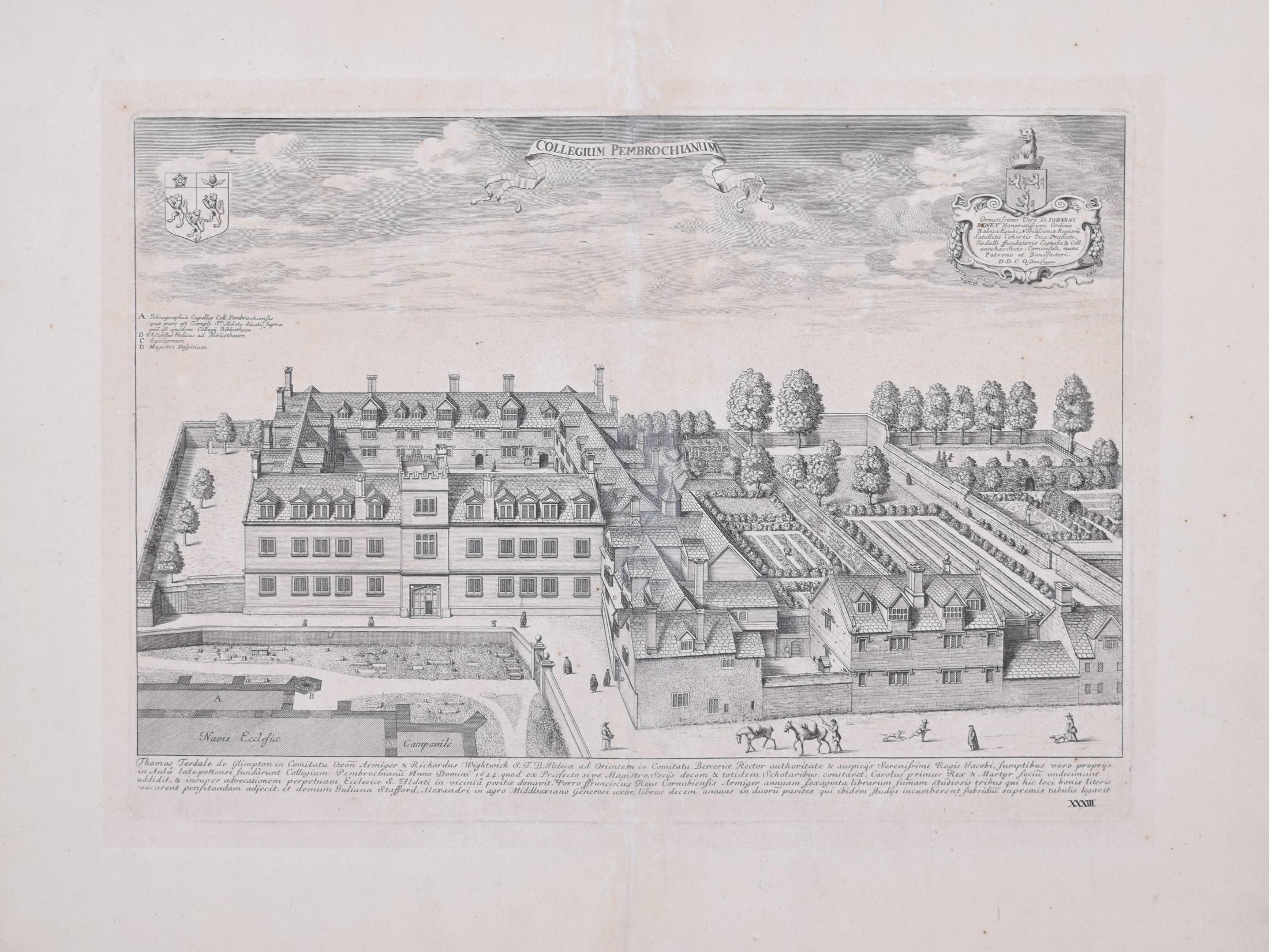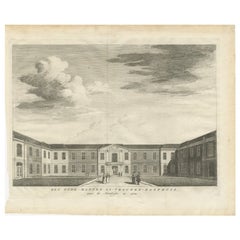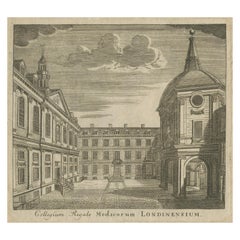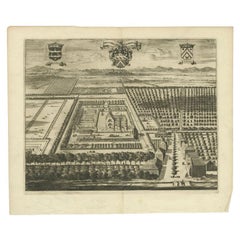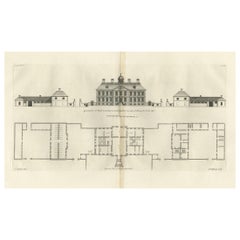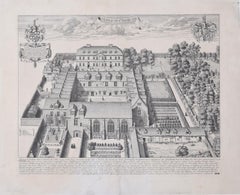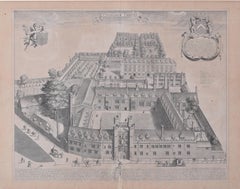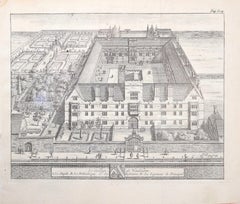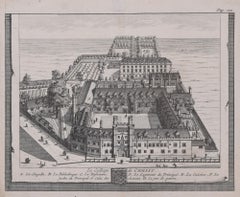Items Similar to Antique Engraving of Chelsea College – View with Formal Gardens, ca.1705
Video Loading
Want more images or videos?
Request additional images or videos from the seller
1 of 11
Antique Engraving of Chelsea College – View with Formal Gardens, ca.1705
$286.50
£211.08
€240
CA$394.32
A$437.56
CHF 230.80
MX$5,341.66
NOK 2,920.09
SEK 2,734.90
DKK 1,826.90
About the Item
Antique Engraving of Chelsea College – Early 18th Century View with Formal Gardens
This finely detailed antique engraving presents a bird’s-eye view of Chelsea College (now the Royal Hospital Chelsea) in London, as seen from the south, across its formal gardens and symmetrical avenues. The perspective captures the grandeur of the college complex, with its central hall and flanking wings, laid out in the classical style characteristic of Sir Christopher Wren’s architectural design. The surrounding grounds are meticulously depicted, with tree-lined walkways, geometric garden beds, and expansive lawns.
The River Thames is shown in the distance, labelled “Die Themse,” revealing that this print was intended for a German-speaking audience. Various parts of the scene are annotated in German script, including “Die Halle” (The Hall), “Das Capell” (The Chapel), and “Das Wacht haus” (The Guard House). The caption below reads “Chelsey Collegium,” followed by a numbered legend explaining the key features. The engraving is also marked “No. 25,” indicating it was part of a published series of views, likely from a European city atlas or travel book produced in the early 18th century.
The Royal Hospital Chelsea was founded in 1682 by King Charles II as a retirement home for veteran soldiers — the famous “Chelsea Pensioners.” This engraving, therefore, not only serves as a record of the building’s early years but also reflects the European fascination with London’s grand public works at the time.
The piece was executed in copperplate engraving, a technique allowing for fine architectural precision and tonal variation through dense line work and cross-hatching.
Condition summary: Very good for age. Strong, clear impression with minimal wear to the plate lines. Paper lightly toned with minor spotting in margins, no tears or repairs noted. Paper retains good strength, backed with handmade paper.
Framing tips: This engraving would present beautifully in a dark walnut or black frame with a light cream or ivory mount, ideally with a period-style beaded edge to echo the engraving’s formality. Museum-grade glazing is recommended for preservation.
Technique: Copperplate engraving
Maker: Unknown (vander Aa?), German, early 18th century
- Dimensions:Height: 5.91 in (15 cm)Width: 7.49 in (19 cm)Depth: 0.01 in (0.2 mm)
- Materials and Techniques:Paper,Engraved
- Place of Origin:
- Period:
- Date of Manufacture:circa 1705
- Condition:Condition summary: Very good for age. Strong, clear impression with minimal wear to the plate lines. Paper lightly toned with minor spotting in margins, no tears or repairs noted. Paper retains good strength, backed with handmade paper.
- Seller Location:Langweer, NL
- Reference Number:Seller: BG-13825-31stDibs: LU3054346231712
About the Seller
5.0
Recognized Seller
These prestigious sellers are industry leaders and represent the highest echelon for item quality and design.
Platinum Seller
Premium sellers with a 4.7+ rating and 24-hour response times
Established in 2009
1stDibs seller since 2017
2,569 sales on 1stDibs
Typical response time: <1 hour
- ShippingRetrieving quote...Shipping from: Langweer, Netherlands
- Return Policy
Authenticity Guarantee
In the unlikely event there’s an issue with an item’s authenticity, contact us within 1 year for a full refund. DetailsMoney-Back Guarantee
If your item is not as described, is damaged in transit, or does not arrive, contact us within 7 days for a full refund. Details24-Hour Cancellation
You have a 24-hour grace period in which to reconsider your purchase, with no questions asked.Vetted Professional Sellers
Our world-class sellers must adhere to strict standards for service and quality, maintaining the integrity of our listings.Price-Match Guarantee
If you find that a seller listed the same item for a lower price elsewhere, we’ll match it.Trusted Global Delivery
Our best-in-class carrier network provides specialized shipping options worldwide, including custom delivery.More From This Seller
View AllAntique Print of the Former Retirement Home in Amsterdam, c.1760
Located in Langweer, NL
Antique print titled 'Het Oude-Mannen en Vrouwen-Gasthuis, naar de Noordzyde te zien'. This print depicts the former retirement home in Amsterdam, The Netherlands. This print origina...
Category
Antique 18th Century Prints
Materials
Paper
$114 Sale Price
20% Off
Antique Engraving – Royal College of Physicians, Warwick Lane, London, 1746
Located in Langweer, NL
Antique Engraving – Royal College of Physicians, Warwick Lane, London, 1746
This finely executed 18th-century engraving depicts the courtyard of the Royal College of Physicians at W...
Category
Antique Mid-18th Century German Prints
Materials
Paper
Antique Print of the Popkensburg Estate by Smallegange, 1696
Located in Langweer, NL
Antique print titled 'Pro veritate et Libertate'. Copper engraving of the Popkensburg estate and the village of Sint Laurens, the Netherlands. This print originates from 'Nieuwe Cron...
Category
Antique 17th Century Prints
Materials
Paper
$122 Sale Price
20% Off
Antique Print of Horseheath Hall in Cambridgeshire, England, 1725
Located in Langweer, NL
Antique print titled 'General front of Horse heath Hall in Cambridgeshire (..)'.
Old engraving of Horseheath Hall, Cambridgeshire.
The original Hall was the home of the Alington family and was visited by Queen Elizabeth 1...
Category
Antique 18th Century Prints
Materials
Paper
$710 Sale Price
30% Off
Old Engraving of Foremarke Hall, a Manor House in Derbyshire, England, ca.1770
Located in Langweer, NL
Description: Antique print titled 'North Front of Foremark (..)'.
Old engraving of Foremarke Hall, a Georgian-Palladian country house and manor house. This print originates from 'V...
Category
Antique 1770s English Prints
Materials
Paper
$811 Sale Price
20% Off
Antique Print of the Oostkapelle Estate by Smallegange, 1696
Located in Langweer, NL
Antique print titled 'Het Huys en Hof ten Duyne'. Copper engraving of the estate of Oostkapelle, the Netherlands. This print originates from 'Nieuwe Cronyk van Zeeland' by Mattheus S...
Category
Antique 17th Century Prints
Materials
Paper
You May Also Like
Trinity College, Oxford David Loggan 1705 engraving
By David Loggan
Located in London, GB
To see our other views of Oxford and Cambridge, scroll down to "More from this Seller" and below it click on "See all from this seller" - or send us a message if you cannot find the view you want.
David Loggan (1634 - 1692)
Trinity College, Oxford (1705)
Engraving
32 x 41 cm
Loggan's view of Trinity from the second edition of the 'Oxonia Illustrata'.
Loggan was born to English and Scottish parents, and was baptised in Danzig in 1634. After studying engraving in Danzig with Willem Hondius (1598-1652 or 1658), he moved to London in the late 1650s, going on to produce the engraved title-page for the folio 1662 Book of Common Prayer. He married in 1663 and moved to Nuffield in Oxfordshire in 1665. Loggan was appointed Public Sculptor to the nearby University of Oxford in the late 1660s, having been commissioned to produce bird’s-eye views of all the Oxford colleges. He lived in Holywell Street as he did this. The 'Oxonia Illustrata' was published in 1675, with the help of Robert White (1645-1704). Following its completion, Loggan began work on his equivalent work for Cambridge; the 'Cantabrigia Illustrata' was finally published in 1690, when he was made engraver to Cambridge University.
The 'Oxonia Illustrata' also includes an engraving of Winchester College...
Category
1670s Realist Landscape Prints
Materials
Engraving
Christ's College, Cambridge David Loggan 1690 engraving
By David Loggan
Located in London, GB
To see our other views of Oxford and Cambridge, scroll down to "More from this Seller" and below it click on "See all from this seller" - or send us a message if you cannot find the ...
Category
1670s Realist Landscape Prints
Materials
Engraving
Wadham College, Oxford engraving by Pieter van der Aa after David Loggan
By Pieter Van Der Aa
Located in London, GB
Pieter van der Aa (1659-1733), after David Loggan (1634–1692)
Wadham College, Oxford
Engraving
12 x 16 cm
An eighteenth-century view of Wadham, engrave...
Category
Early 18th Century Prints and Multiples
Materials
Engraving
Christ's College, Cambridge engraving by Pieter van der Aa after David Loggan
By Pieter Van Der Aa
Located in London, GB
To see our other views of Oxford and Cambridge, scroll down to "More from this Seller" and below it click on "See all from this Seller" - or send us a message if you cannot find the ...
Category
Early 18th Century Realist Prints and Multiples
Materials
Engraving
Pembroke College, Oxford engraving by Pieter van der Aa after David Loggan
By Pieter Van Der Aa
Located in London, GB
Pieter van der Aa (1659-1733), after David Loggan (1634–1692)
Pembroke College, Oxford
Engraving
12 x 16 cm
An eighteenth-century view of Pembroke Co...
Category
Early 18th Century Prints and Multiples
Materials
Engraving
Pembroke College, Oxford 1705 engraving by David Loggan
By David Loggan
Located in London, GB
To see our other views of Oxford and Cambridge, scroll down to "More from this Seller" and below it click on "See all from this seller" - or send us a message if you cannot find the view you want.
David Loggan (1634 - 1692)
Pembroke College, Oxford (1705)
Engraving
31 x 44 cm
Loggan's view of Pembroke from the second edition of the 'Oxonia Illustrata'.
Loggan was born to English and Scottish parents, and was baptised in Danzig in 1634. After studying engraving in Danzig with Willem Hondius (1598-1652 or 1658), he moved to London in the late 1650s, going on to produce the engraved title-page for the folio 1662 Book of Common Prayer. He married in 1663 and moved to Nuffield in Oxfordshire in 1665. Loggan was appointed Public Sculptor to the nearby University of Oxford in the late 1660s, having been commissioned to produce bird’s-eye views of all the Oxford colleges. He lived in Holywell Street as he did this. The 'Oxonia Illustrata' was published in 1675, with the help of Robert White (1645-1704). Following its completion, Loggan began work on his equivalent work for Cambridge; the 'Cantabrigia Illustrata' was finally published in 1690, when he was made engraver to Cambridge University.
The 'Oxonia Illustrata' also includes an engraving of Winchester College (Winchester and New College share William of Wykeham as their founder) whilst the 'Cantabrigia Illustrata' includes one of Eton College (which shares its founder, Henry VIII, with King’s College).
Bird’s-eye views from this era required a particular talent as an architectural perspectivist; it was not until 1783 that it became possible for artists to ascend via hot air balloons and view the scenes they were depicting from above. Loggan thus had to rely on his imagination in conceiving the views.
Loggan’s views constitute the first accurate depictions of the two Universities, in many ways unchanged today. Whilst the Oxford engravings were produced in reasonable numbers and ran to a second edition by Henry Overton (on thicker paper and with a plate number in Roman numerals in the bottom right-hand corner), those of Cambridge were printed in much smaller numbers.
The Dutchman Pieter van der Aa published some miniature versions of the engravings for James Beverell’s guidebook to the UK, 'Les Delices de la Grande Bretagne' (circa 1708). The contemporary artist Andrew Ingamells...
Category
1670s Realist Landscape Prints
Materials
Engraving
